Best
WIRED
HEADPHONES
SRH840A BEST FOR PIANISTS, MUSIC STUDENTS, PRODUCERS,
AND AUDIO ENGINEERS
-
Overall: Collapsible Headphones With Removable Ear Pads. Closed-Back Design That Reduces The Background Noise
-
Best Feature: The Headphones Are Light With Cushioned Earpads.
-
TedScore™: 9/10
Best
WIRELESS
HEADPHONES
Ultra Headphones The Ultimate Take on Immersive
Bose Audio!
-
Overall: Closed-back wireless headphones offering Bose's ultimate personalized listening experience
-
Best Feature: Manually adjust noise cancellation and add WindBlock to seal yourself into your music
-
TedScore™:
9/10
Best
HEADPHONE AMPLIFIER
-
Overall: Studio-quality headphones with 50mm drivers and low-latency BOSS WL-T wireless transmitter deliver impeccable sound quality
-
Best Feature: Choose from three virtual environments: Surround, Static, and Stage
-
TedScore™: 8.5/10
If you ask, “Can you plug headphones into a guitar?” I’ll go straight to the point. Plugging headphones into a guitar is not as straightforward as it may sound.
The problem is that the jacks on your guitar and headphones are incompatible. You must find additional accessories and setups that allow you to hear the sound of your guitar using the headphones.
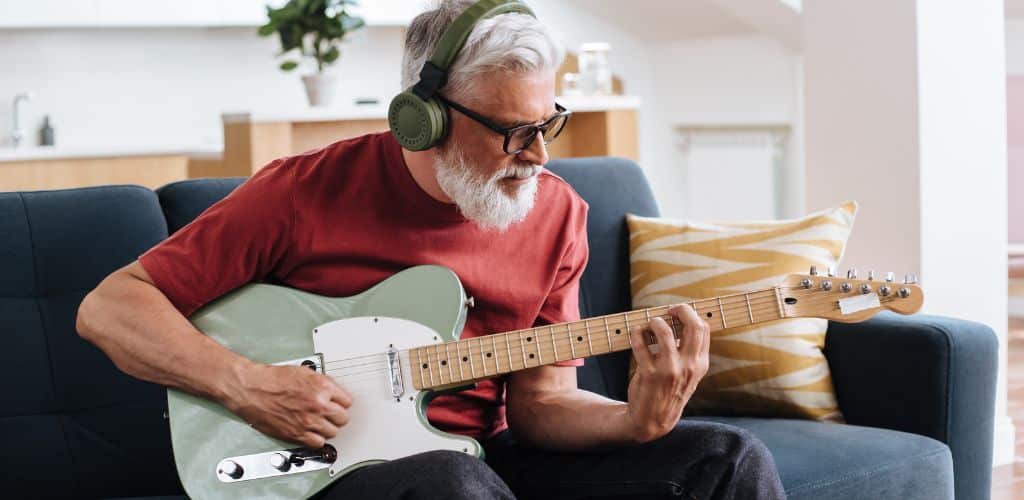
To solve this mismatch, you’ll need some handy gadgets. Adapters or amplifiers with headphone outputs can bridge the gap between guitar and headphones.
This is particularly useful for practice sessions where you aim to keep the noise down. With the right setup, you can jam on your electric or acoustic-electric guitar without disturbing those around you.
However, using Bluetooth headphones with electric guitars presents significant latency issues that can hinder real-time playing. While Bluetooth headphones work well for listening to music, the delay introduced makes them impractical for guitar practice.
Understanding
Electric Guitar Basics
What is an Electric Guitar, and How Does it Work?

An electric guitar is a fascinating instrument that transforms the vibrations of its strings into amplified sound through electronic pickups. These pickups are essentially magnets wrapped in wire, which detect the string vibrations and convert them into electrical signals.
These signals are then sent to an external device, such as a guitar amp or an audio interface, which amplifies and shapes the sound.
The beauty of an electric guitar lies in its versatility.
By using various effects pedals and amplifiers, you can modify the sound quality to suit different genres and styles.
Whether you’re aiming for a clean, crisp tone or a heavy, distorted sound, the electric guitar can deliver it all.
The role of a guitar amp is crucial here, as it not only amplifies the sound but also adds character and depth to your playing.
Similarly, an audio interface can be used to connect your guitar to a computer, allowing you to record and manipulate your sound digitally.
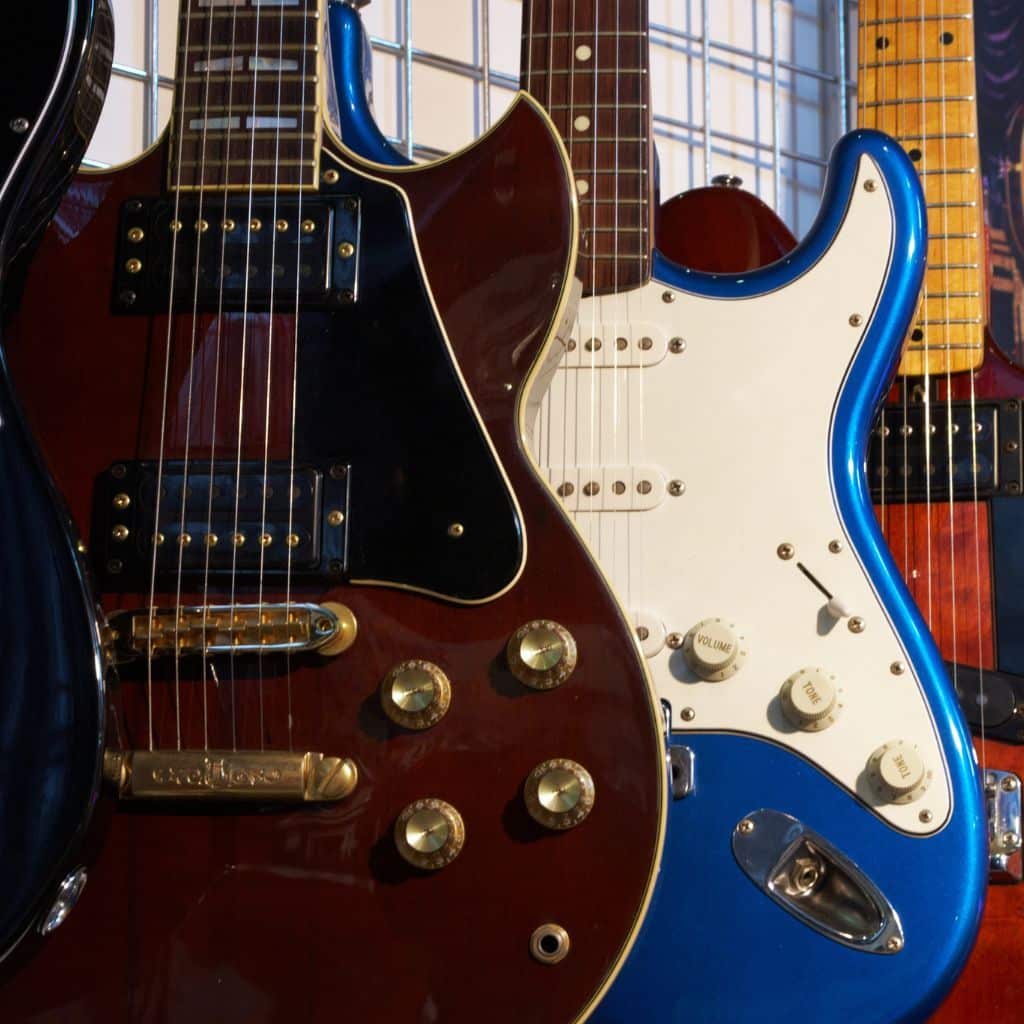
Why Play Electric Guitar with Headphones?
Playing electric guitar with headphones is a game-changer for many musicians. It offers a convenient and practical way to practice and play without disturbing others.

Imagine being able to jam out late at night without worrying about waking up your family or annoying your neighbors. With headphones, you can focus entirely on your playing and tone, free from external distractions.
Moreover, using headphones can help you develop your skills and techniques more efficiently.
The clarity and detail you hear through headphones allow you to catch every nuance of your playing, making it easier to identify areas for improvement.
Understanding Guitar Headphone Connectivity
Connecting your headphones to a guitar isn’t as easy as plugging it into your phone, but it’s definitely doable with the right gear. To connect headphones to various types of guitar amplifiers, you need to ensure that the amplifier has a headphone output jack.
If it doesn’t, you might need an adapter. Be cautious and avoid connecting headphones to incorrect jacks to prevent equipment damage.
Let me tell you the things that you need to achieve this!
Headphone Jacks and Adapters

Your electric guitar outputs its sweet sounds via a 6.3mm (1/4″) output jack, a size commonly used for guitar cables.
Headphones, on the other hand, typically have a smaller 3.5mm jack that won’t fit directly into your guitar.
To bridge this size gap, you’ll need an audio adapter. This little device converts the larger guitar jack to the smaller headphone size.
It’s a simple solution: plug the adapter into your guitar, then your headphones into the adapter, and you’re all set to rock and play electric guitar silently.
Audio Interface Basics

For a more sophisticated setup, you may turn to an audio interface.
This device acts as a middleman between your guitar and headphones. It converts the analog signals from your 6.3mm guitar output into digital signals that your computer can understand and manipulate.
Then, it sends the audio back to your headphones, allowing you to hear your guitar, record, and tweak the sound.
It’s perfect for home studios and silent jam sessions. Plus, most audio interfaces have built-in headphone jacks, so an extra adapter is often unnecessary!
Speaking of audio interfaces, you might want to check out the Behringer U-PHORIA UMC404HD Audio Interface.
It offers impressive clarity and flexibility for its price point, making it a great value for both amateur and professional recording setups.
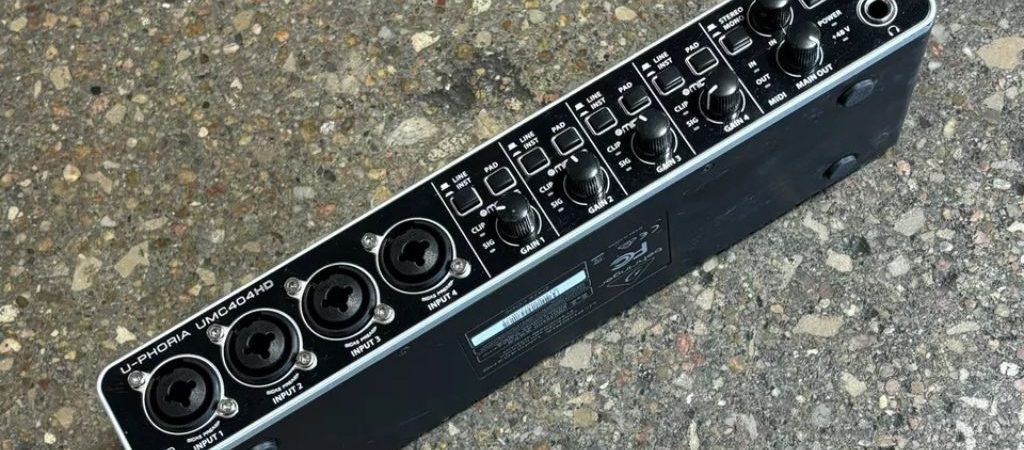
Behringer U-PHORIA UMC404HD Audio Interface

PERFECT FOR: a wide array of popular recording software
FEATURES: 4X4 USB audio interface ideal for microphones & instruments
OTHER INFO: 24-bit/192khz resolution provides professional sound quality
Behringer U-PHORIA UMC404HD Audio Interface
- 4 x studio-grade midas mic preamps deliver outstanding sound
- Incredibly robust, impact-resistant metal housing
- Compatible with a wide variety of popular recording software
- The phantom power supply often adds a hum to inputs and has poor filtering
When you click ‘Check Price’, you’ll see there are loads of great places to buy this item. Our personal favorite is Sweetwater for the US, and Thomann and Gear4Music for the UK & Europe.
They are the largest music retailers, with excellent customer service, competitive prices, really fast shipping, and the longest guarantees.
The professional musician who wrote this article combined many things,
from the product build, manufacturer’s reputation through to feedback
from other users, to create our famous TedScore™.
Choosing the
Right Headphones for
Electric Guitar Practice

When it comes to private guitar practice, quality headphones can make all the difference. They allow you to immerse yourself in your play without outside disturbances.
Wired vs Wireless Options
Wired headphones offer a more reliable connection with no lag, ensuring you receive the audio in real-time; this is vital for accurately monitoring your guitar playing.
Wireless headphones, specifically those Bluetooth headphones, offer freedom of movement and convenience.
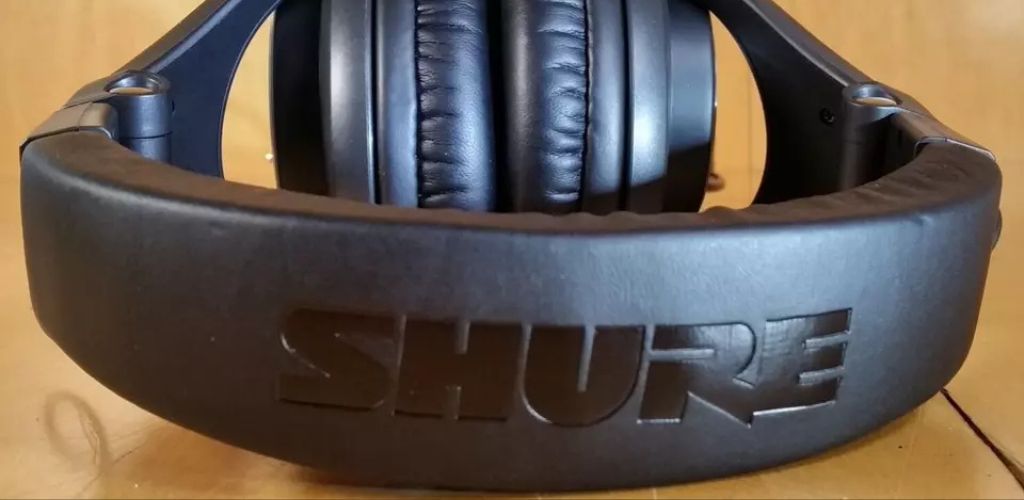
However, with wireless options, you need to monitor battery life to avoid interruptions.
When it comes to wired headphones, I highly recommend the Shure SRH840A.
It delivers precise sound with comfortable padding, making it ideal for extended studio sessions and critical listening.
Shure SRH840A Professional Headphones

SUITABLE FOR: Practising on digital pianos
COMES WITH: 40mm dynamic neodymium drivers
FEATURES: Collapsible headphones with removable ear pads. Closed-back design that reduces the background noise. The headphones are light with cushioned earpads.
Shure SRH840A Professional Headphones
- High-range quality sound
- Comfortable headphones on the ear
- Expensive for a digital piano beginner
When you click ‘Check Price’, you’ll see there are loads of great places to buy this item. Our personal favorite is Sweetwater for the US, and Thomann and Gear4Music for the UK & Europe.
They are the largest music retailers, with excellent customer service, competitive prices, really fast shipping, and the longest guarantees.
The professional musician who wrote this article combined many things,
from the product build, manufacturer’s reputation through to feedback
from other users, to create our famous TedScore™.
Sound Quality and Comfort

When considering sound quality, look for headphones that provide clear and balanced audio.
You want to hear every string’s vibration and sound of your guitar, so headphones with a wide frequency range are your best bet.
Additionally, comfort is key during those long practice sessions, so seek out headphones with ample padding and adjustable fits.
Headphones that rest comfortably on your ears will make extended use much more pleasant, allowing you to focus solely on your chords and melodies.
For comfortable wireless headphones, I vouch for the Bose QuietComfort headphones.
It provides exceptional noise cancellation and comfort, perfect for enjoying immersive audio experiences in noisy environments.
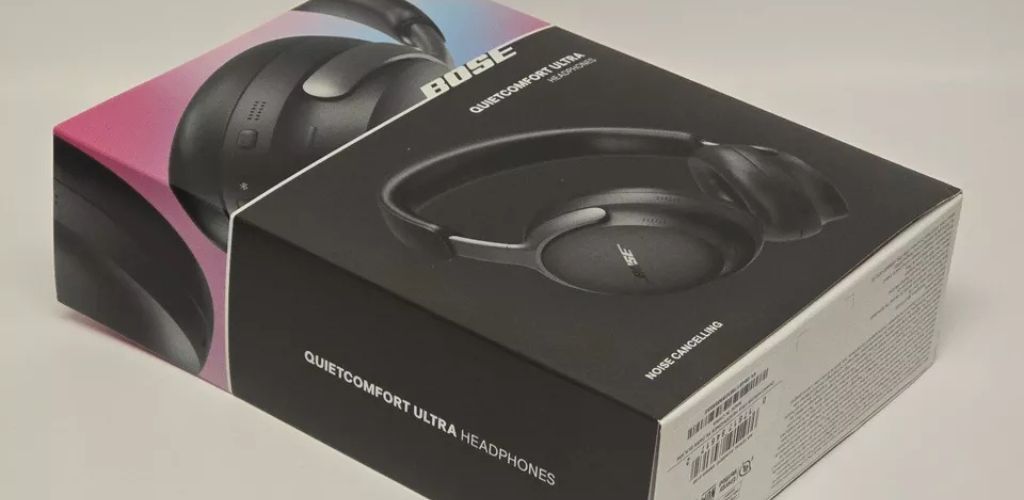
Bose QuietComfort Ultra Headphones - Black
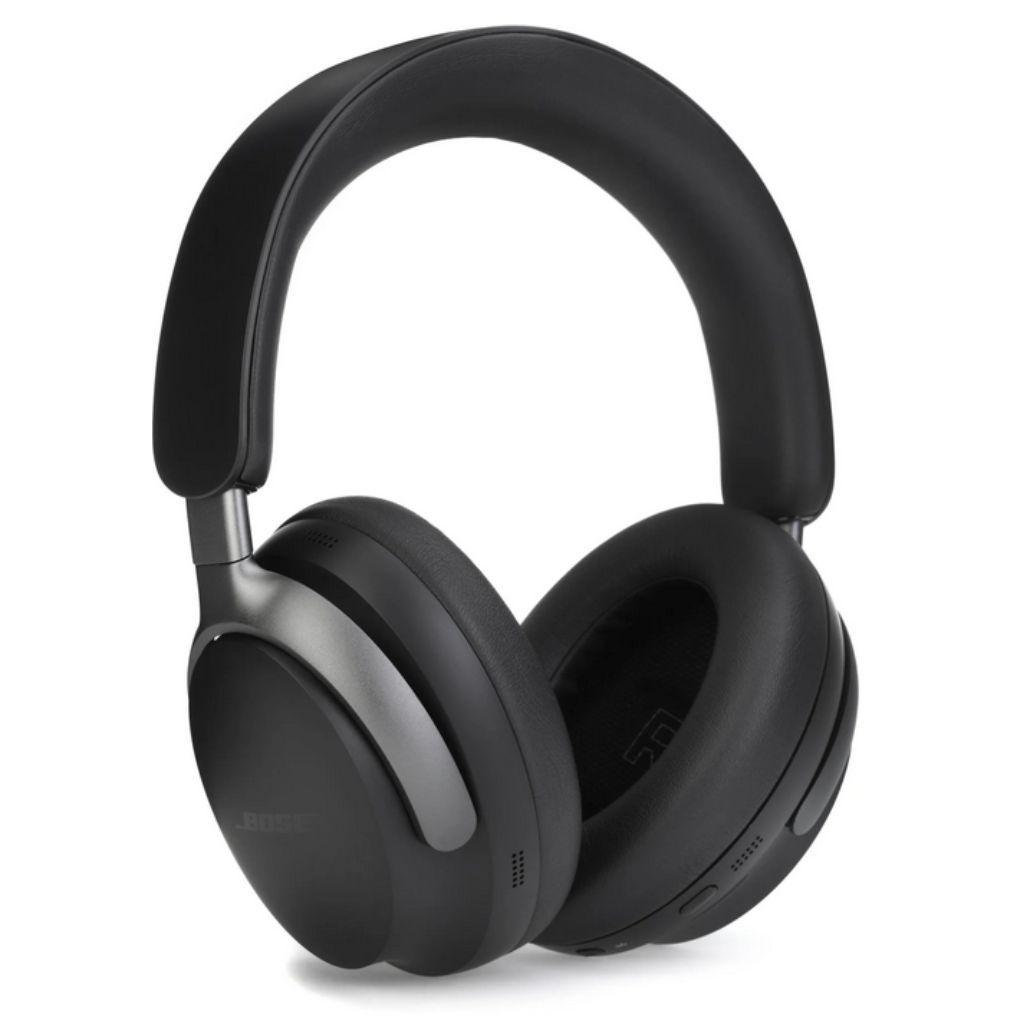
FEATURES: Closed-back wireless headphones offering Bose's ultimate personalized listening experience
OTHER INFO: Manually adjust noise cancellation and add WindBlock to seal yourself into your music
- Up to 24 hours of battery on a single charge — charges via included USB-C cables
- Equipped with Bluetooth 5.1 for a superior connection to your devices
- Expensive as compared to other wireless headphones
When you click ‘Check Price’, you’ll see there are loads of great places to buy this item. Our personal favorite is Sweetwater for the US, and Thomann and Gear4Music for the UK & Europe.
They are the largest music retailers, with excellent customer service, competitive prices, really fast shipping, and the longest guarantees.
The professional musician who wrote this article combined many things,
from the product build, manufacturer’s reputation through to feedback
from other users, to create our famous TedScore™.
Amplifiers with
Headphone Outputs
Connecting to a guitar amplifier with a headphone output allows you to practice silently, anytime. This setup is ideal for those late-night jam sessions or private practice without disturbing others.
Guitar Amps with Built-In Headphone Jacks
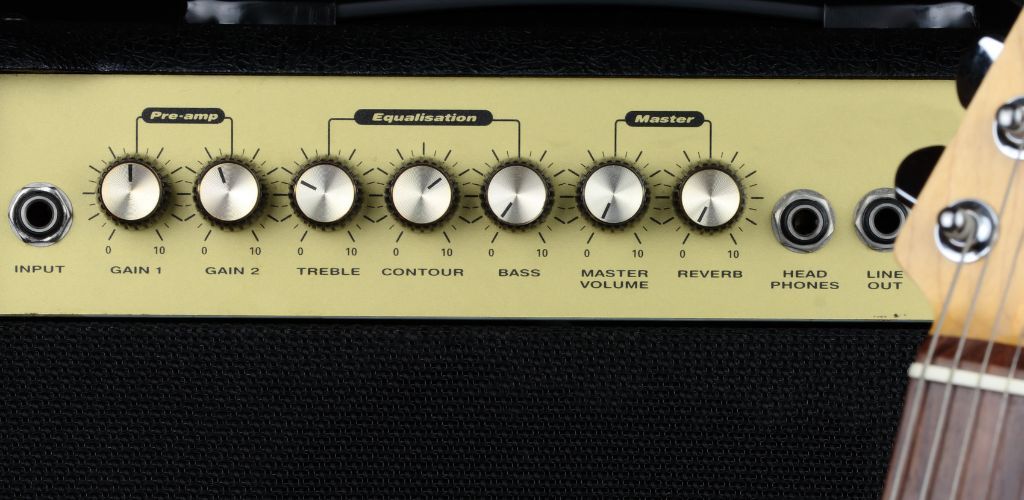
Many modern guitar amps come with a handy headphone output jack. This feature lets you plug in your headphones directly and immerse yourself in your playing.
Whether you own a classic tube amp or a solid-state model, check the specs—there’s a good chance it has this convenient addition.
If you’re looking for a good guitar amp with a headphone jack, I suggest the Fender Champion 20.
It is a compact and affordable amp with diverse tones and effects, making it perfect for practice sessions and small gigs.
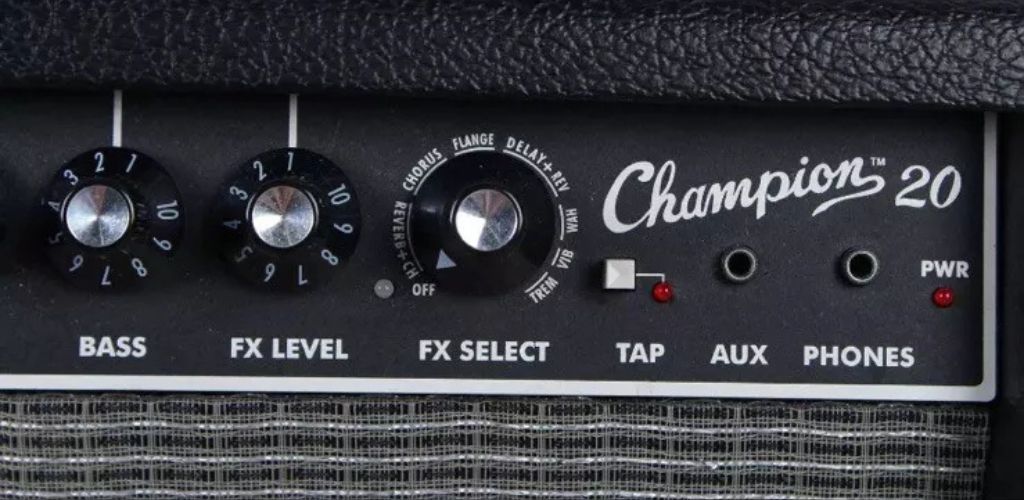
Fender Champion 20 1x8 inch 20-watt Combo Amp
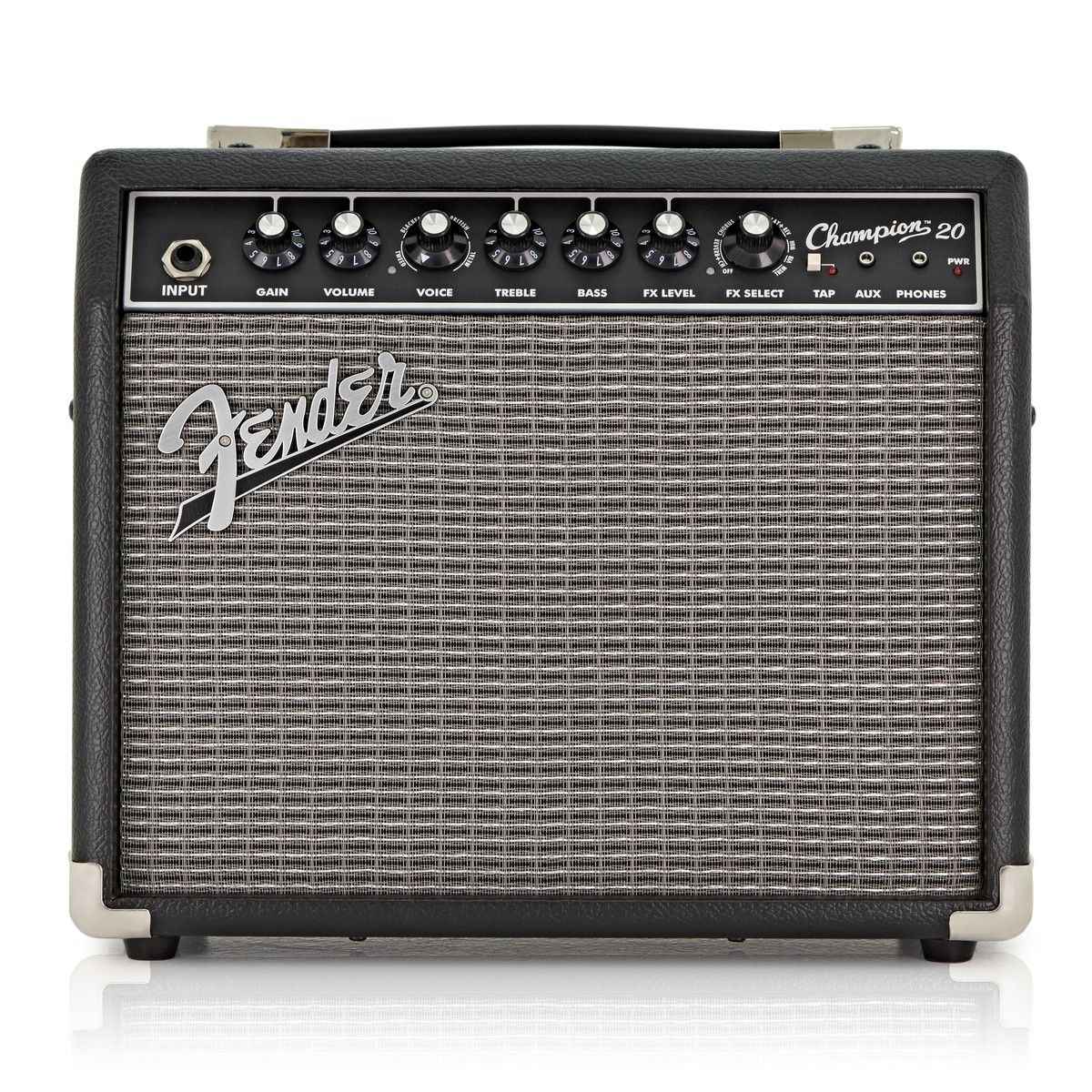
FEATURES: 20-watt solid state combo amp with 1 x 8" Fender Special Design speakers
OTHER INFO: 1 x 1/4" instrument input; 1 x 1/8" stereo aux input for use with media player; and 1 x 1/8" stereo headphone jack
- Effects include reverb, delay/echo, chorus, tremolo, Vibratone, and more
- Delay time and tremolo speed can be set with the TAP button
- None!
When you click ‘Check Price’, you’ll see there are loads of great places to buy this item. Our personal favorite is Sweetwater for the US, and Thomann and Gear4Music for the UK & Europe.
They are the largest music retailers, with excellent customer service, competitive prices, really fast shipping, and the longest guarantees.
The professional musician who wrote this article combined many things,
from the product build, manufacturer’s reputation through to feedback
from other users, to create our famous TedScore™.
Portable Amp Options
Consider a portable amplifier with a built-in headphone output if you’re always on the move.
These compact amps pack a good punch for their size and offer a headphone output jack for private practice.
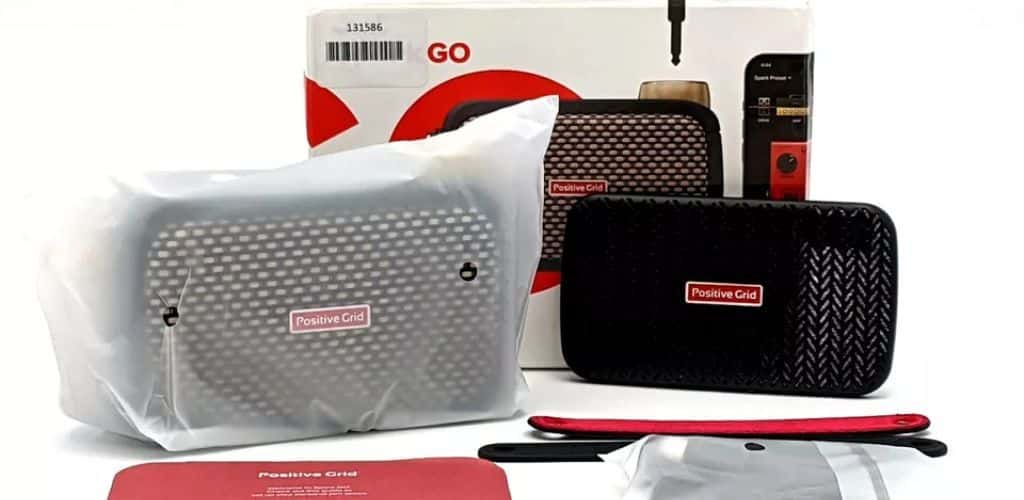
You won’t have to compromise on sound quality either—many of these amps provide a full, rich sound that will satisfy your earbuds.
And the best part? They’re small enough to take just about anywhere, from your bedroom to your backyard or even on the road.
For a portable amp with a built-in headphone output, I personally love the Positive Grid Spark GO.
It is a highly portable and versatile amp with smart features and a vast array of tones, ideal for practice and jamming on the go.
Positive Grid Spark GO Ultra-portable Smart Guitar Amp and Bluetooth Speaker
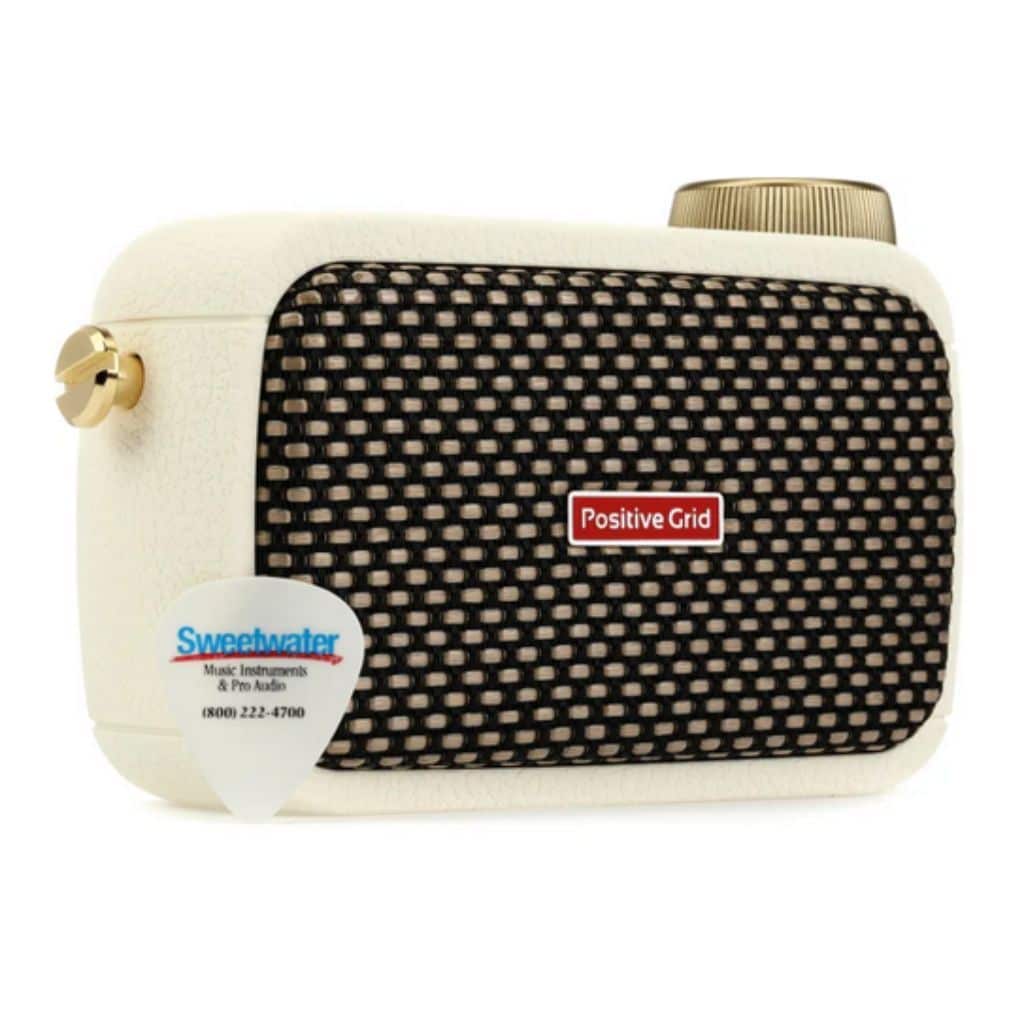
FEATURES: A pocket-sized powerhouse of an amp boasting full integration with Positive Grid’s Spark mobile app
OTHER INFO: Headphone jack for silent practice sessions
- The exceptionally long-lasting battery gives you up to 10 hours of play
- Can be used as a full-fledged audio interface to lay down your next tracks
- No Cons at all!
When you click ‘Check Price’, you’ll see there are loads of great places to buy this item. Our personal favorite is Sweetwater for the US, and Thomann and Gear4Music for the UK & Europe.
They are the largest music retailers, with excellent customer service, competitive prices, really fast shipping, and the longest guarantees.
The professional musician who wrote this article combined many things,
from the product build, manufacturer’s reputation through to feedback
from other users, to create our famous TedScore™.
Using a Multi-Effects Pedal with Headphones
What is a Multi-Effects Pedal and How Does it Work?
A multi-effects pedal is a versatile tool that can transform your electric guitar’s sound in countless ways. This electronic device combines various effects, such as distortion, reverb, delay, and chorus, into a single unit. With a multi-effects pedal, you can experiment with different sounds and create unique tones that suit your style.
Using a multi-effects pedal with headphones is straightforward. First, connect your electric guitar to the pedal using a standard guitar cable. Then, plug your headphones into the pedal’s headphone output jack.
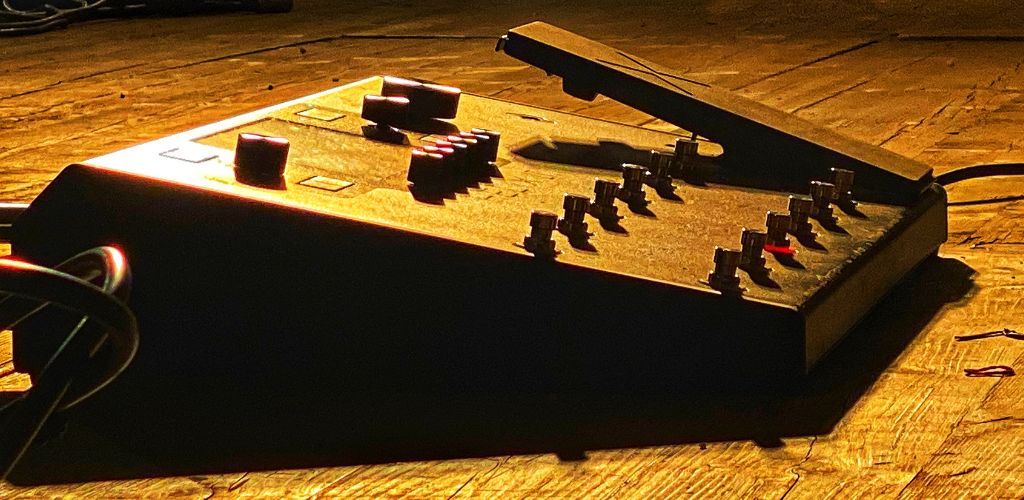
This setup allows you to hear your guitar with all the effects applied, providing a rich and immersive sound experience. Many multi-effects pedals also feature built-in amp simulators, which replicate the sound of different guitar amps.
This means you can enjoy a realistic amp sound without needing a separate guitar amp.
The convenience of a multi-effects pedal with a headphone output makes it an excellent choice for silent practice. You can tweak the effects and settings to your liking, ensuring that your guitar playing sounds just the way you want it.
Whether you’re practicing at home, in a studio, or on the go, a multi-effects pedal with headphones offers a flexible and powerful solution for enhancing your electric guitar experience.
The Rise of
Headphone Amplifiers
Headphone amplifiers for guitar have revolutionized the way you practice. They allow you to jam out without waking the neighbors, maintaining the quality of your guitar’s sound right in your ears.
Stand-Alone Headphone Amps

Your quest for quiet practice sessions could lead you to stand-alone headphone amps.
These effective gadgets pair with your headphones and let you easily control your guitar’s volume and tone.
Most of them pack a punch with features like built-in effects and EQ settings, offering a miniaturized control room experience.
The Boss Waza-Air is a standout, incorporating a wireless system that grants you freedom from tangled cords while you groove.
Boss Waza-Air Wireless Guitar Headphone Amplifier
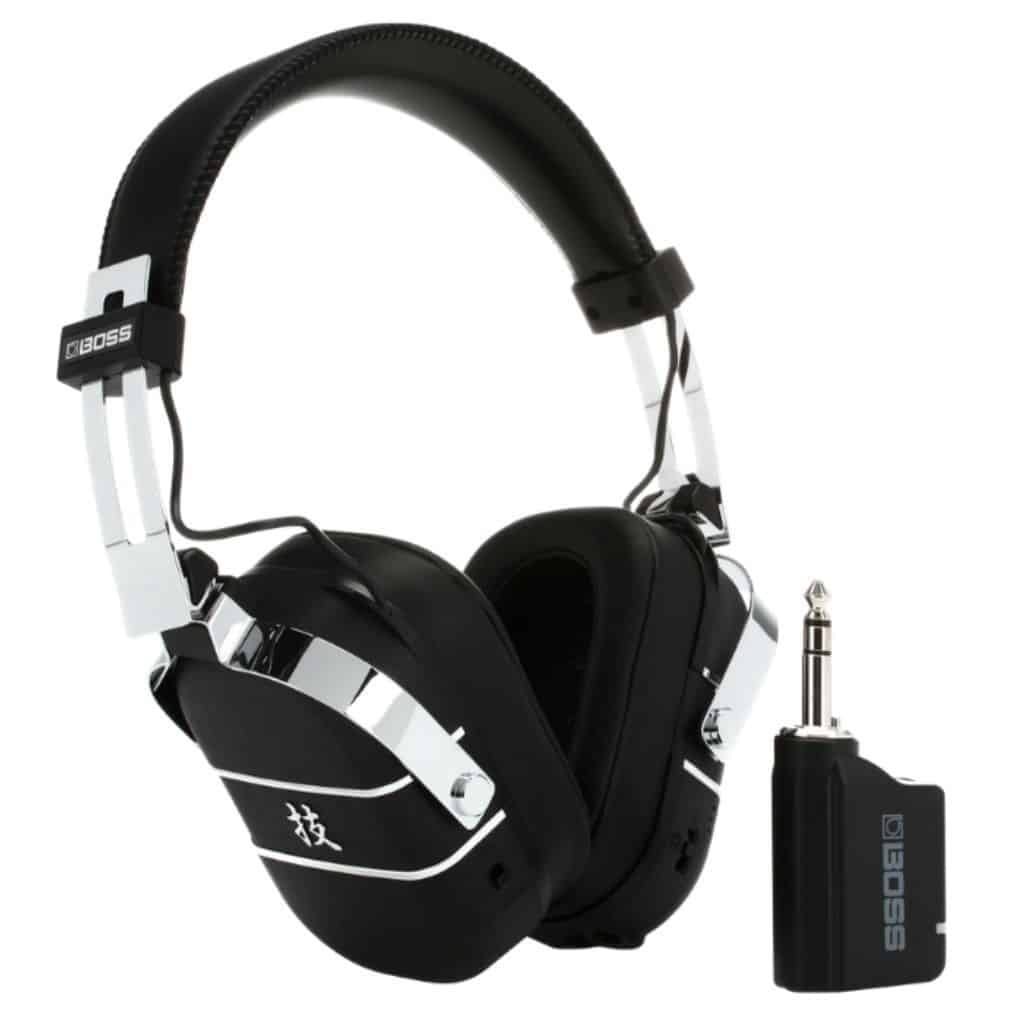
FEATURES: Studio-quality headphones with 50mm drivers and low-latency BOSS WL-T wireless transmitter deliver impeccable sound quality
OTHER INFO: Choose from three virtual environments: Surround, Static, and Stage
- Bluetooth compatibility lets you stream your favorite songs with built-in controls for volume and playback
- A rechargeable lithium-ion battery provides up to 5 hours of continuous play
- Expensive when compared to other guitar headphone amplifiers
When you click ‘Check Price’, you’ll see there are loads of great places to buy this item. Our personal favorite is Sweetwater for the US, and Thomann and Gear4Music for the UK & Europe.
They are the largest music retailers, with excellent customer service, competitive prices, really fast shipping, and the longest guarantees.
The professional musician who wrote this article combined many things,
from the product build, manufacturer’s reputation through to feedback
from other users, to create our famous TedScore™.
Vox Amplugs
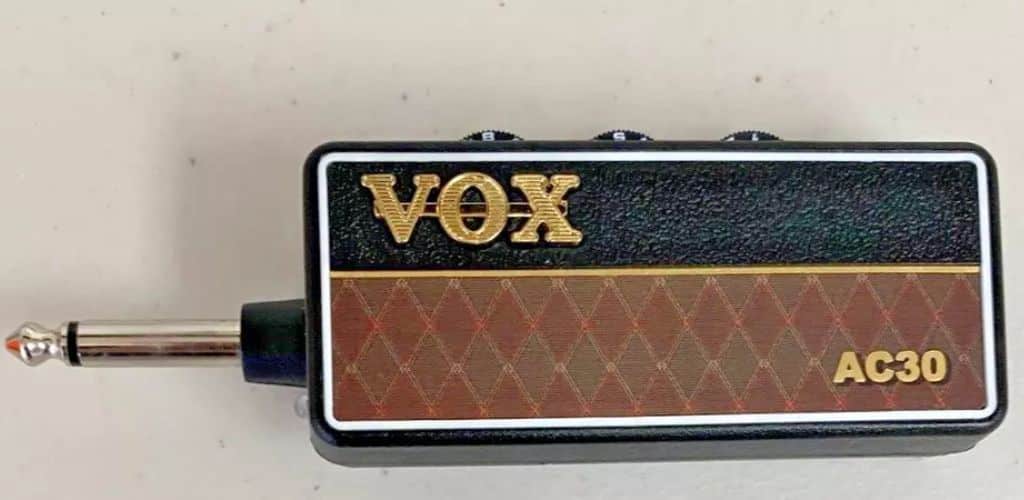
If you’re looking for simplicity, the Vox Amplug series might interest you. It directly plugs into your guitar’s output jack—no cables required!
These devices are small but mighty. They give you various tone options, such as classic rock, metal, or blues.
They often include a built-in rhythm function, which means you can even practice your timing while you strum in silence.
With the Amplug, turning any space into your rehearsal hall is as easy as plugging in and playing away.
The Vox amPlug 2 AC30 is incredibly convenient and directly delivers that classic British crunch tone to my headphones, making it perfect for late-night practice sessions without disturbing anyone.
Vox amPlug 2 AC30 Headphone Guitar Amp
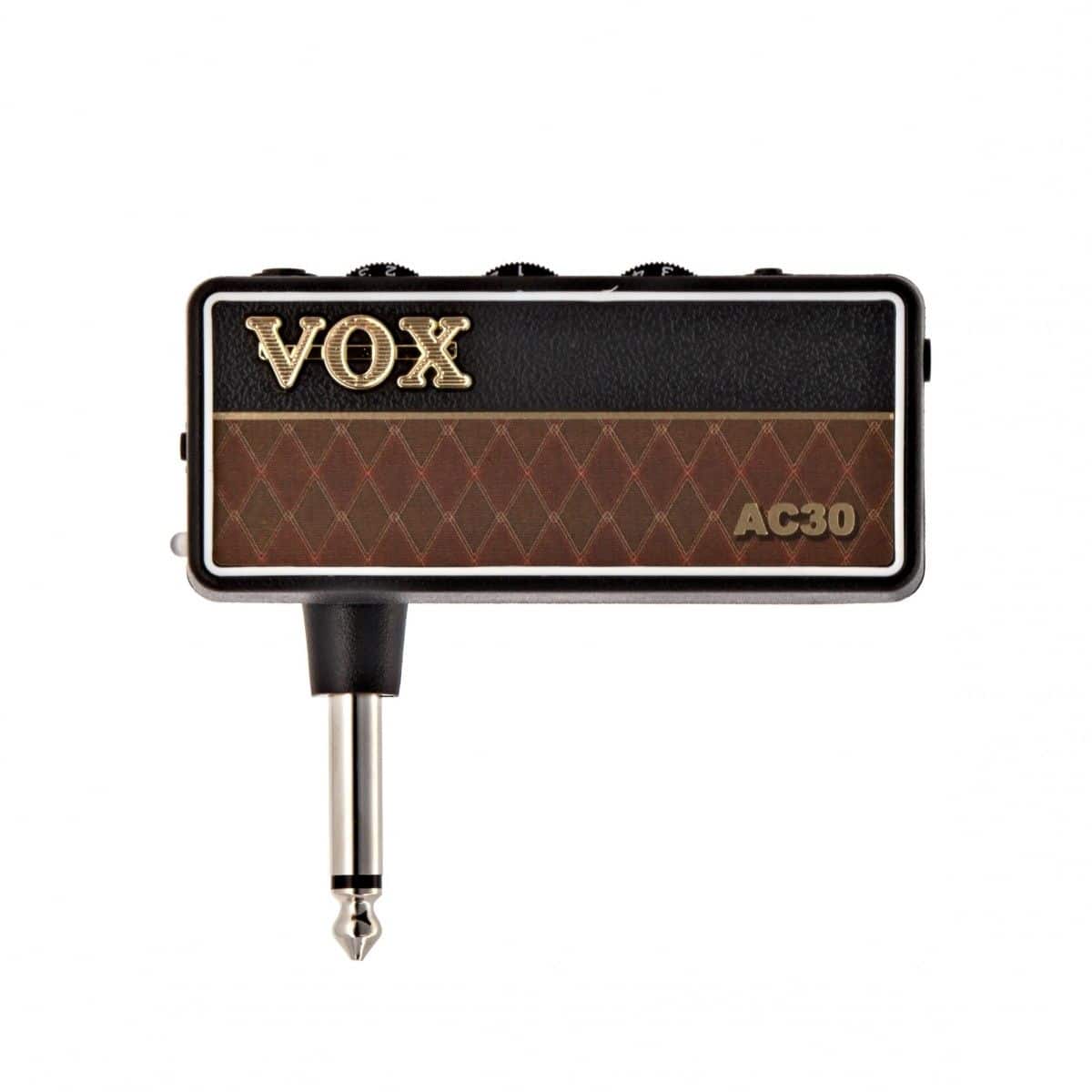
FEATURES: Improved analog circuit provides exceptionally clear and present tone
OTHER INFO: 3 amplifier modes for tonal variety
- The new folding plug mechanism rotates 180 degrees to fit any guitar
- Auto power off function conserves battery life
- Requires 2 AAA batteries
When you click ‘Check Price’, you’ll see there are loads of great places to buy this item. Our personal favorite is Sweetwater for the US, and Thomann and Gear4Music for the UK & Europe.
They are the largest music retailers, with excellent customer service, competitive prices, really fast shipping, and the longest guarantees.
The professional musician who wrote this article combined many things,
from the product build, manufacturer’s reputation through to feedback
from other users, to create our famous TedScore™.
Can You Plug Headphones into a Guitar:
The Final Verdict!
So, to answer your question, directly plugging headphones into an electric guitar isn’t standard practice. Your guitar’s signal isn’t strong enough for headphones to pick up.
You’ll need an amplifier or a headphone amp to bridge the gap. This little device will boost the signal of your guitar for your headphones.
It’s not just about volume but also quality. With the right setup, your jam sessions can stay silent, crisp, and clear.
Headphone jack and adapters
Audio interfaces – which I recommend the Behringer U-PHORIA
Guitar amps with headphone jacks – you might want to check out the Fender Champion 20
Portable Amplifiers – Positive Grid Spark GO is a very good example!
Headphone Amps – Boss Waza-Air Wireless Guitar Headphone Amps is literally the boss for this!
Vox Amplugs – Vox amPlug 2 AC30 will be your little buddy if you go this route.
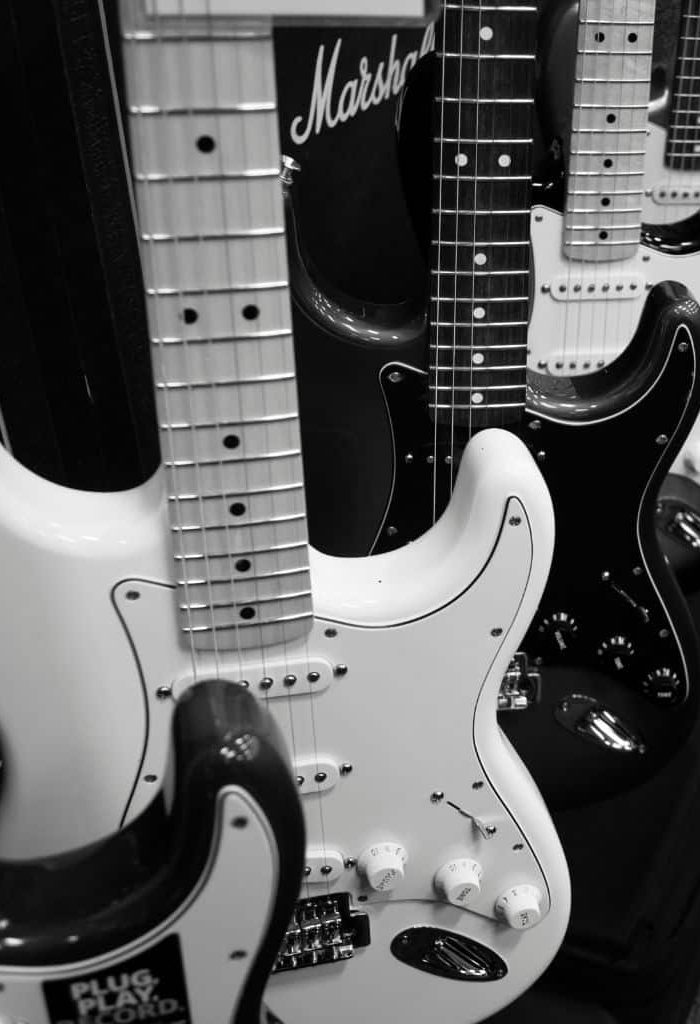
Before you buy anything else, remember to always check for headphone compatibility. Your goal is a smooth playing experience; good gear ensures you rock out without disturbing the peace.
I hope this helps!
But wait! There’s more…
If you want an electric guitar or know someone who does, this next article might be the answer you’re looking for. It lists the best electric guitars a beginner guitar player could have!
FAQ's
You can use a wide range of headphones for playing guitar, particularly those that offer a flat frequency response for accurate sound reproduction, such as studio monitor headphones. Models from brands like Audio-Technica, Sennheiser, Sony, and Beyerdynamic are popular among guitarists for electric guitar practice with amps and recording sessions.
To play guitar quietly, you can use a practice amp with a headphone output, engage in low-volume practice on an electric guitar without an amp, or use a soundhole cover on an acoustic guitar to reduce the volume. Additionally, playing with lighter picking or fingerpicking techniques and using a lighter gauge of strings can help achieve a quieter sound.
To play an electric guitar without an amp, you can play it unplugged, which will produce a quiet, acoustic-like sound suitable for practice. Alternatively, you can use a headphone amp, connect to a computer interface for digital amplification, or use effects pedals with headphone outputs to hear yourself with full electric guitar effects.
Using the headphone jack on a guitar amp as a line out is generally not recommended, as the signal level and impedance might not match what is expected by a line input on a mixer or audio interface. However, some modern amps are designed with headphone jacks that double as line-outs, so check your amp’s specifications to ensure compatibility.










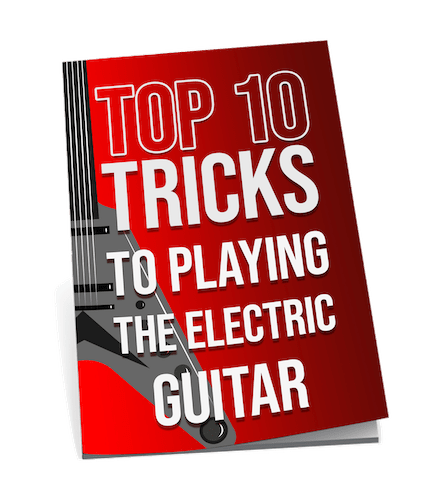
i read the part about choosing headphones and was wondering, does it really make a big difference if you use wired over wireless? i got some wireless ones as a gift and thinking if i should change them for wired ones for practicing guitar.
Loving the idea of headphone amps! Perfect for night practice when everybody’s asleep. Gonna grab one asap.
Just got one. It’s awesome!
Vox Amplug is a life saver for late night jams. Totally recommend!
I’ve been using a multi-effects pedal with my headphones for quite a while, and I must say, the flexibility it offers in terms of tonal variety is unparalleled. The ability to switch between effects without having to invest in multiple stompboxes is a game changer for home practice sessions.
Hey Hugh Richardson, got a question about those portable amp options. How good are they really for beginners? Considering space and budget, but don’t wanna compromise sound quality too much. Thanks!